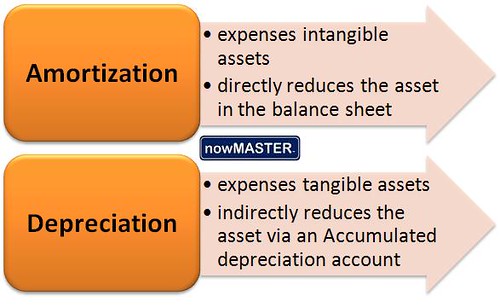Optimize Cash Flow: Best Practices for Structuring Amortization in Commercial Loans
n the competitive world of commercial real estate, maximizing cash flow is a top priority for borrowers, private lenders, and real estate investors. By following best practices and principles specifically tailored to structuring amortization, you can unlock the full potential of your investments and achieve sustainable financial success.
In this article, we will explore the most effective strategies and proven techniques to optimize cash flow in commercial real estate loans. By understanding and implementing these best practices, you can ensure stable cash flow, reduce risks, and enhance profitability.
Whether you are a borrower seeking to maximize your cash flow or a lender aiming to optimize returns, this guide will provide you with the essential knowledge and actionable insights you need. Join us as we embark on this journey to uncover the best practices for structuring amortization in commercial loans and pave the way to financial prosperity.
Importance of Following Best Practices
Adhering to best practices is vital for borrowers and lenders alike. By implementing proven strategies, borrowers can ensure sustainable cash flow, minimize risks, and enhance profitability. Lenders, on the other hand, can mitigate potential defaults and optimize their returns on investment. Let’s dive into the key best practices and principles to achieve these goals.
Best Practices for Structuring Amortization in Commercial Loans
1. Strategic Loan Term Length
Choosing the right loan term length is crucial. Longer terms can reduce monthly payments, providing borrowers with more immediate cash flow. However, shorter terms can help borrowers pay off the loan faster, saving on interest costs. Assessing your financial situation, investment goals, and risk tolerance is essential in determining the most suitable term length.
2. Consider Balloon Payments
Implementing balloon payments involves making smaller monthly payments during the loan term, with a large lump sum payment due at the end. This structure can free up cash flow for other investments or expenses during the loan term. However, borrowers must be prepared to make the significant balloon payment when it becomes due.
3. Evaluate Interest Rate Options
Evaluating interest rate options is critical in optimizing cash flow. Fixed-rate loans provide stable monthly payments, ensuring predictable cash flow. Adjustable-rate loans offer lower initial rates but can fluctuate over time. Analyzing market conditions, interest rate trends, and risk tolerance will help you select the most suitable option.
4. Utilize Prepayment Options
Prepayment options allow borrowers to pay off a portion or the entire loan balance before its scheduled maturity. By taking advantage of prepayment options, borrowers can reduce interest paid over the loan term and improve cash flow. However, it’s essential to be aware of any associated penalties or fees for early repayment.
5. Implement Cash Flow Sweep Mechanisms
Implementing cash flow sweep mechanisms can benefit both borrowers and lenders. These mechanisms ensure that excess cash flow generated by the property is used to pay down the loan principal. By reducing the outstanding balance, borrowers can lower interest costs and enhance overall cash flow.
Real-World Examples of Successful Strategies
Let’s explore real-world examples of how borrowers successfully optimized cash flow through best practices in structuring amortization:
- Example 1: The Power of Balloon Payments
- In one case, a borrower with multiple income-generating properties opted for balloon payments. This strategy allowed them to allocate additional cash flow towards property improvements, increasing rental value and overall cash flow.
- Example 2: Prepayment Options for Enhanced Cash Flow
- Another borrower experienced a sudden increase in cash flow due to higher than anticipated rental income
and took advantage of prepayment options to pay down a significant portion of the loan balance. This strategic move reduced the interest burden and improved cash flow significantly, allowing the borrower to explore new investment opportunities. - Example 3: Cash Flow Sweep Mechanisms in Action
- A commercial property owner implemented a cash flow sweep mechanism that automatically allocated excess cash flow generated by the property towards paying down the loan principal. This resulted in a substantial reduction in the outstanding balance over time, leading to lower interest expenses and increased cash flow for further investments.
Benefits of Adopting These Practices
By adopting these best practices for structuring amortization in commercial loans, borrowers and lenders can enjoy several benefits:
- Improved cash flow stability
- Enhanced profitability and returns
- Reduced interest costs
- Flexibility to allocate cash flow for other investments or expenses
- Mitigation of default risks
- Opportunities for faster loan repayment

Potential Challenges
While following these best practices can lead to optimized cash flow, it is essential to be aware of potential challenges or obstacles:
- Balancing short-term cash flow needs with long-term financial goals
- Adapting to changing market conditions
- Evaluating the impact of interest rate fluctuations
- Understanding and negotiating prepayment penalties
- Implementing effective cash flow sweep mechanisms
Next Steps
Structuring the amortization of commercial loans is a critical aspect of optimizing cash flow for borrowers and lenders.
By considering strategic loan term lengths, balloon payments, interest rate options, prepayment options, and cash flow sweep mechanisms, borrowers can achieve sustainable cash flow and increased profitability. It is important to assess individual financial situations, investment goals, and risk tolerances to determine the most suitable approach.
Final Words
If you’re a private lender or real estate investor looking to optimize cash flow in commercial real estate loans, take action today. Evaluate your current loan structures and assess how implementing these best practices can benefit your financial objectives.
Remember, the key to success lies in understanding your unique circumstances and aligning them with the principles outlined in this article.
Now is the time to seize the opportunity and unlock the full potential of your commercial real estate investments. Optimize your cash flow, minimize risks, and maximize profitability by structuring amortization in line with these best practices. Your financial future awaits!
What strategies have you employed to optimize cash flow in your commercial real estate loans? Share your experiences and insights with us in the comments below!
